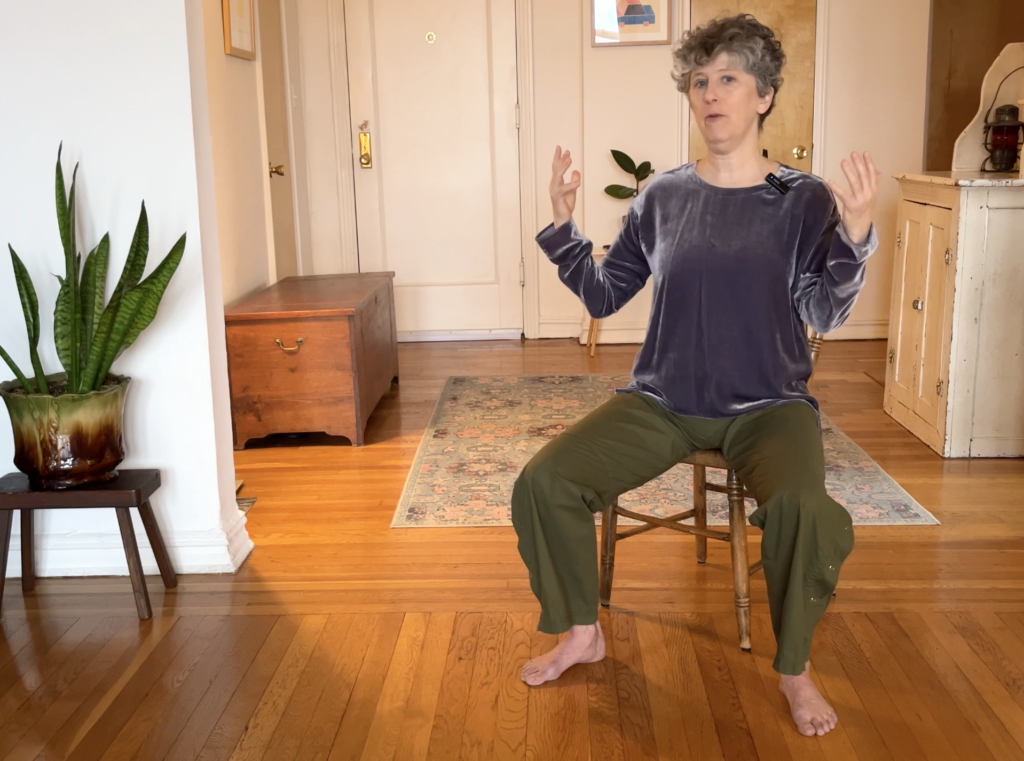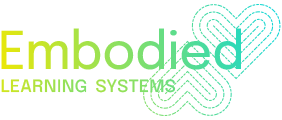
How embodiment can help leaders adapt and succeed
This is the beginning of a new series of videos on embodiment practices that support a fluid, more sustainable, and humane model for leadership. I’m doing this because many of my clients are suggesting I might have something to offer, even though I don’t have an MBA!
Can you imagine what it would be like to be a supported leader? Someone who is acting boldly, but not so boldly that they jump off a cliff with no safety net? Someone who accepts their weaknesses and their strengths and doesn’t have to worry about being perfect?
Personally, I have a natural tendency to jump into leadership roles before I’m…quite ready.
One embodiment practice that has had a huge impact on my ability to lead is returning to a primary, or fetal shape in my spine. It looks like this:

Limbs crossed, spine in a C curve, yielding into the support of the ground. My excitable body loves a reminder that this is possible.
Others might need the opposite. They might need to practice pushing off of support, standing tall, reaching up and out into the world.
That looks more like this:

There are an overwhelming number of different models for effective leadership.
Each one is supported by data and research as being “the most effective.” Each model often requires folks to invest money and time to learn a very elaborate set of skills.
This doesn’t make intuitive sense to me. It leaves out context and relationality. Issues like technology, work location, and organizational culture are just a few of the multiple contexts modern leaders must understand.
Furthermore, work processes are changing so fast that once you learn how to succeed in one context, it’s shifted underneath your feet.
Fundamental embodiment skills, in my experience, have proven themselves indispensable in navigating this multiplicity of contexts.
These skills support your ability to return attention to your own body, and from there to flow out into the world, then return back to yourself over and over again. This video is my first attempt at sharing a super simple, foundational practice that can help you do the same thing too!
That complete cyclical flow of awareness from yourself, into the world, and back to yourself, can get interrupted by stress, overworking, and overthinking. Sometimes we can’t return to ourselves until the weekend – if we are even that lucky.
My tendency, in leadership roles I’ve taken throughout my life (choreographer, producer, entrepreneur, group leader) is to be so outwardly focused that I forget myself, my body, my feelings and my needs.
Slowly, over time, I’ve been able to use my embodiment skills to rebalance. The more I do that, the more comfortable I am in leadership roles. Also, it’s so great to know it’s just a role, and not “who I am.”
Fluidity in Leadership Styles
Two contrasting leadership styles that cry out for fluidity are authoritative leadership and resonant leadership. Instead of seeing them as opposing, I view them as opposite ends of a dynamic range.
I challenge the traditional binary view of leadership styles. Let’s open up the possibility of integrating both approaches to meet context as needed. Developing skill and flexibility in how we pay attention aligns with this concept of fluid leadership.
Developmental Movement Concept of Primary and Secondary
The developmental movement concept of primary (towards self and the ground) and secondary (away from self and ground) action of the body, and of one’s attention in the environment, provide non-intellectual insight into your personal preferences around engaging with the world.
Understanding your own physical preferences is crucial to understanding how you as an individual will approach leadership and interact with others.
Some folks may be more inclined towards primary, being more inwardly focused, good at listening and processing information internally. They may be super creative and insightful, but not so comfortable organizing large groups of people.
Other may lean towards secondary, with attention moving up, out, and away from themselves and into the environment as they take action and inspire others to follow them with clear authority. But neither of those preferences should make you feel like you can’t grow from there!
Understanding Personal Preferences
It’s important to acknowledge that different people have different preferences and capacities. New energy and insight are gained when you ground yourself in self-acceptance.
Then, you can use that embodied acceptance as a springboard to extend yourself a little bit outside of your comfort zone. The only requirement for this is the willingness to be curious, surprised, and imperfect.
Embodiment Practices for Fluid Leadership
The foundational language of embodiment can help aspiring leaders have a heart centered understanding of communication – instead of an elaborate, cognitively complex set of expectations around how they should be leading.
Before we speak, we move. One of the simplest and most elegant frameworks for pre-verbal language of the body comes from by Gestalt Psychotherapist Ruella Frank, who calls them The Six Fundamental Movements:
Yield
Push
Reach
Grasp
Pull
Release
Today’s video addresses the first three, in a chair – which is probably where you spend most of your time!
By mindfully practicing these movements, you can develop a more fluid range of attention. Will this translate into your leadership style? Let’s find out together. I suspect it does, but I am just at the beginning of this inquiry and really appreciate any feedback!
What I do know is that an embodied approach not only empowers you to navigate diverse leadership styles but also promotes introspection, self-awareness, and holistic growth within yourself and in the larger context of your community or organization.
I hope you will join me in my inquiry into fluid leadership. I hope it will transcend conventional wisdom and pave the way for a more inclusive and dynamic leadership landscape.
